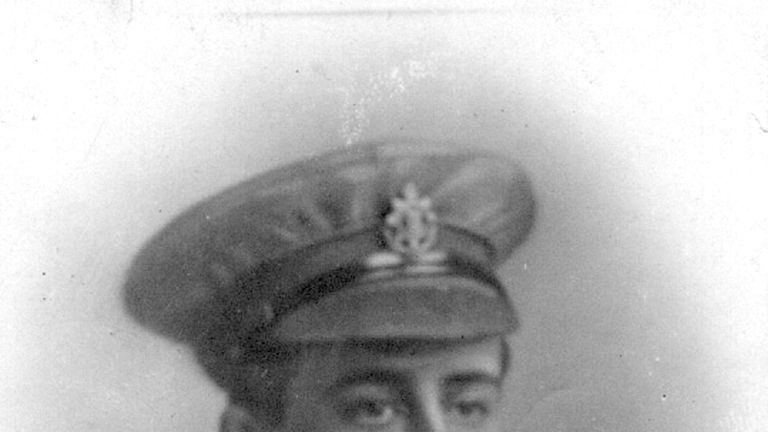Soldiers killed in First World War buried after finally being identified
The families of two young British privates killed in the First World War have finally seen them laid to rest more than 100 years later.
Private Henry Wallington and Private Frank Mead, of the 23rd (County of London) Battalion, were buried with full military honours – alongside an unidentified British soldier who served in the same regiment.
Known as the war detectives, the Ministry of Defence’s Joint Casualty and Compassionate Centre (JCCC) organised the service after identifying the two soldiers and tracing their surviving relatives.
The remains of all three were discovered on the battlefield near Anneux in February 2016.
Research suggests Ptes Wallington and Mead were killed on 3 December 1917, during the Battle of Cambrai – which marked the first large-scale use of tanks – while they were both in their early 20s.
The only artefact found with them giving any clue to their identity was a single 23rd (County of London) Battalion shoulder title.
After extensive research, the JCCC narrowed the candidates down to nine possible names and used genealogy to trace surviving members so DNA samples could be taken.
Two tests returned positive results, identifying Ptes Wallington and Mead.
Margot Bains, the niece of Pte Wallington, and Paul and Chris Mead, the two great-nephews of Pte Mead, were among those who attended the funeral at the Commonwealth War Graves Commission (CWGC) British Cemetery at Hermies Hill, near Albert.
Ms Bains, from Lincolnshire, said: “It’s been beautiful, very moving.
“We didn’t know about Henry, we didn’t know he existed at all.”
Chris Mead said: “My father passed away four years ago but he had held on to all of Frank’s letters. We had the letters from the trenches but did not know where he (Frank) was. We are just grateful for the opportunity for his story to be told.”
Nicola Nash, who led the JCCC search to identify the soldiers, said: “Getting that match was just an amazing achievement. I’m just so pleased the families are actually able to be here today to see them be buried.
“It’s absolutely devastating when you get two matches and one that actually hasn’t been identified. We will still keep working on it and we will identify him.”
At dawn on 20 November 1917, the British Third Army launched an attack towards Cambrai using the largest number of tanks so far in the conflict.
But more than half were out of action by the end of the first day and when the battle ended in early December more than 80,000 men from both sides were either wounded, missing or killed.
Source: Read Full Article



